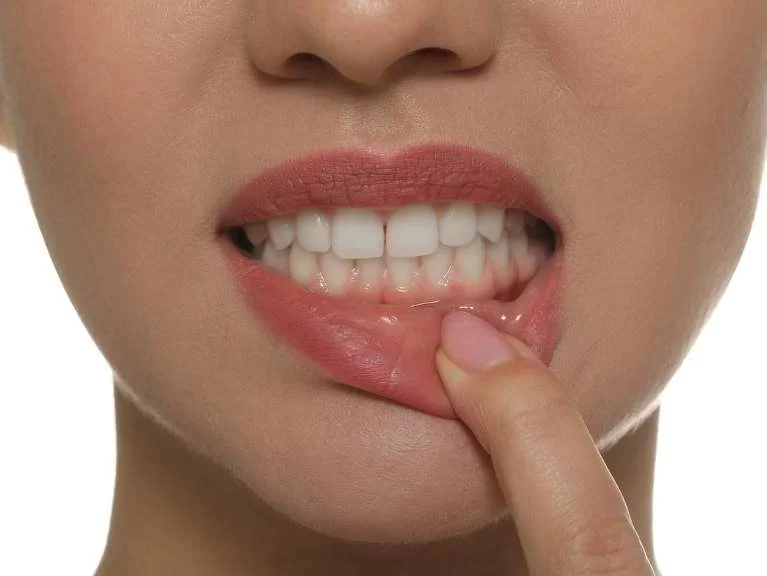
- Understanding-Receding-Gums
- Early-Signs-and-Symptoms
- Causes-and-Risk-Factors
- Preventive-Measures-and-Care
- Real-Life-Case-Study
- Professional-Treatment-Options
1. Understanding Receding Gums: What It Means for Your Oral Health
Receding gums, also known as gum recession, occur when the gum tissue surrounding the teeth pulls back or wears away, exposing more of the tooth or its root. This process not only affects the appearance of your smile but also increases vulnerability to tooth decay, sensitivity, and even tooth loss if left untreated. Understanding the signs of receding gums is essential because early intervention can prevent further damage.
At the core, gum recession reflects a breakdown in the delicate balance of your oral environment. Healthy gums provide a protective barrier, but when that barrier weakens, it signals underlying issues such as gum disease or mechanical injury. This phenomenon is often gradual and subtle, making awareness critical for maintaining long-term gum health.
1.1 The Importance of Early Detection
Many people overlook early gum recession because the initial symptoms can be mild or mistaken for normal gum changes. By learning to recognize these early signs, individuals can seek timely advice and reduce the risk of progression to advanced periodontal disease. Awareness is the first step toward protecting your gums and preserving your smile.
2. Early Signs and Symptoms of Gum Recession to Watch For
Spotting the signs of receding gums early can make a significant difference in outcomes. Common symptoms include:
- Tooth Sensitivity: Increased sensitivity to hot, cold, or sweet foods due to exposed tooth roots.
- Visible Tooth Roots: Noticeable lengthening of teeth as gums pull back.
- Gum Tenderness or Inflammation: Redness, swelling, or bleeding during brushing or flossing.
- Changes in Gum Texture: Gums may appear shiny, thin, or pulled away from the teeth.
- Bad Breath: Persistent bad breath can be an indicator of gum disease contributing to recession.
Recognizing these symptoms early can prompt a consultation with a dental professional to assess gum health thoroughly.
2.1 Why These Symptoms Matter
These signs are not just cosmetic concerns; they reflect the health of the supporting structures of your teeth. Ignoring these symptoms can lead to serious complications, including increased risk of infections and loss of teeth. Thus, paying attention to even subtle changes in your gums can be lifesaving for your oral health.
3. Causes and Risk Factors Behind Gum Recession
Understanding what triggers gum recession is crucial for both prevention and management. Several factors contribute to the development of receding gums, including:
- Poor Oral Hygiene: Inadequate brushing and flossing allow plaque buildup, leading to gum inflammation and recession.
- Aggressive Brushing: Using a hard-bristled toothbrush or brushing too hard can wear down gum tissue.
- Periodontal Disease: Chronic gum infections are a primary cause of gum recession.
- Genetics: Some individuals are more susceptible to gum disease due to hereditary factors.
- Tobacco Use: Smoking or chewing tobacco impairs gum tissue health and healing.
- Hormonal Changes: Hormonal fluctuations, especially in women, can make gums more sensitive.
- Misaligned Teeth or Bite Issues: Uneven pressure can cause gums to recede in certain areas.
Knowing these risk factors can help you adopt targeted strategies to protect your gum health.
3.1 Interaction of Risk Factors
Often, gum recession results from a combination of factors rather than a single cause. For instance, a person with a genetic predisposition who brushes aggressively and smokes is at a much higher risk than someone with only one of these factors. Comprehensive oral care involves addressing all relevant influences.
4. Preventive Measures and Daily Care to Maintain Healthy Gums
Prevention is the best way to combat receding gums. Adopting good oral hygiene habits, lifestyle changes, and regular dental check-ups form the cornerstone of prevention:
4.1 Effective Oral Hygiene Practices
Use a soft-bristled toothbrush and gentle strokes to clean your teeth. Avoid harsh scrubbing, which can damage gum tissue. Floss daily to remove plaque between teeth and below the gumline, areas often missed by brushing alone.
4.2 Lifestyle Adjustments
Quitting tobacco products significantly improves gum health and reduces recession risk. Eating a balanced diet rich in vitamins, especially vitamin C and D, supports gum tissue repair and resistance to infection.
4.3 Regular Dental Visits
Professional cleanings remove hardened plaque (tartar) that cannot be removed by brushing and flossing. Dentists can also monitor gum health and detect early signs of recession, offering timely interventions.
4.4 Using Specialized Products
Products like antimicrobial mouthwashes and toothpaste formulated for sensitive teeth can help manage gum irritation and protect exposed roots. For personalized recommendations, visiting Dentistry Toothtruth can connect you with the most suitable products and services tailored to your needs.
5. Real-Life Case Study: How Early Detection Saved a Smile
Consider the story of Sarah, a 35-year-old who noticed mild sensitivity in her lower front teeth but ignored it for months. Eventually, she observed that her teeth looked longer and felt uncomfortable during brushing. Upon visiting her dentist, she was diagnosed with early-stage gum recession caused by aggressive brushing and mild gum disease.
With professional guidance, Sarah changed her brushing technique, adopted a gentler oral care routine, and received a deep cleaning treatment. Over the next year, her gum health stabilized, and sensitivity decreased significantly. This case highlights how recognizing signs of receding gums early and taking prompt action can prevent serious dental problems and costly treatments later.
5.1 Key Takeaways from Sarah’s Experience
Sarah’s story emphasizes the importance of listening to your body’s signals and not dismissing minor discomfort or visual changes in your gums. It also shows that recovery and stabilization are possible with proper care and professional support.
6. Professional Treatment Options for Advanced Gum Recession
When gum recession progresses beyond the early stages, professional treatments become necessary to restore gum health and protect teeth. Common options include:
6.1 Scaling and Root Planing
A deep cleaning procedure that removes plaque and tartar below the gumline, smoothing the root surfaces to encourage gum reattachment.
6.2 Gum Grafting
In more severe cases, a periodontist may perform gum graft surgery to replace lost tissue using grafts from the patient’s palate or donor tissue. This restores gum coverage and reduces sensitivity.
6.3 Regenerative Procedures
Techniques that stimulate bone and tissue growth around teeth affected by recession, helping rebuild the supporting structures.
Finding the right treatment depends on the severity of the recession and individual patient needs. Consulting with specialists at trusted centers like Dentistry Toothtruth ensures you receive personalized, evidence-based care tailored to your condition.







 Daniel Jeffrey Cohen, DDS5.0 (117 review)
Daniel Jeffrey Cohen, DDS5.0 (117 review) Gentle Dental Moreno Valley4.0 (147 review)
Gentle Dental Moreno Valley4.0 (147 review) Island Coast Dentistry5.0 (302 review)
Island Coast Dentistry5.0 (302 review) Dental Arts of Hastings-on-Hudson | Part of the Roligo Network4.0 (130 review)
Dental Arts of Hastings-on-Hudson | Part of the Roligo Network4.0 (130 review) East Valley Periodontics4.0 (993 review)
East Valley Periodontics4.0 (993 review) Schuller Dental5.0 (196 review)
Schuller Dental5.0 (196 review) The Importance of Oral Health Education During Pregnancy for a Healthy Pregnancy
The Importance of Oral Health Education During Pregnancy for a Healthy Pregnancy Best Tips for Brushing Your Teeth Properly for Healthy Gums: Essential Techniques for Oral Health
Best Tips for Brushing Your Teeth Properly for Healthy Gums: Essential Techniques for Oral Health Why Skipping Dental Checkups Can Lead to Bigger Oral Health Problems
Why Skipping Dental Checkups Can Lead to Bigger Oral Health Problems Advantages of Porcelain Dental Restorations
Advantages of Porcelain Dental Restorations How Can Diabetes Cause Tooth and Gum Problems? Preventing and Managing Oral Health Issues
How Can Diabetes Cause Tooth and Gum Problems? Preventing and Managing Oral Health Issues Healthy Habits for Promoting Good Oral Health and Hygiene: Tips for a Healthy Smile
Healthy Habits for Promoting Good Oral Health and Hygiene: Tips for a Healthy Smile